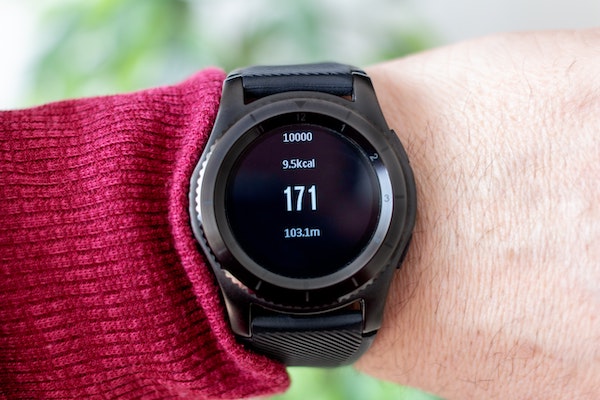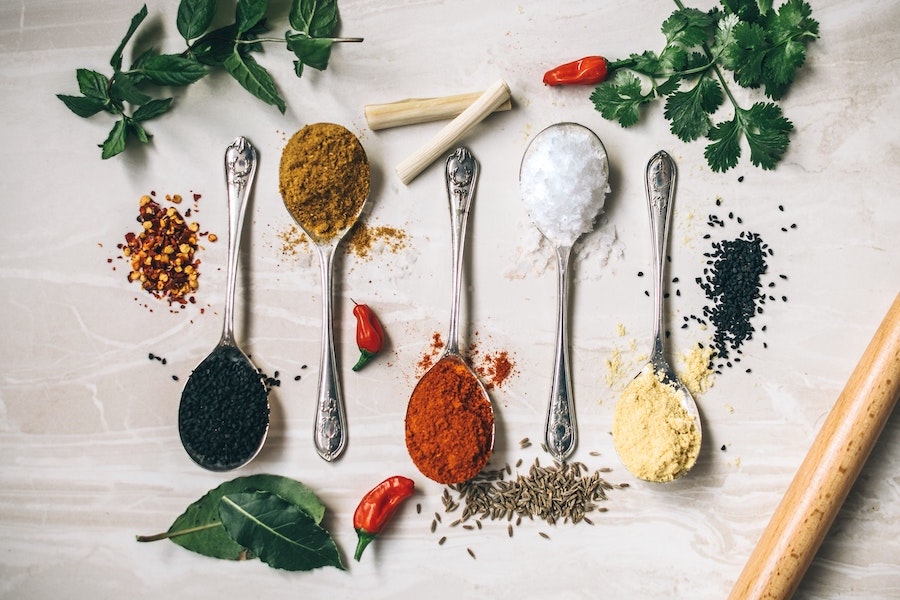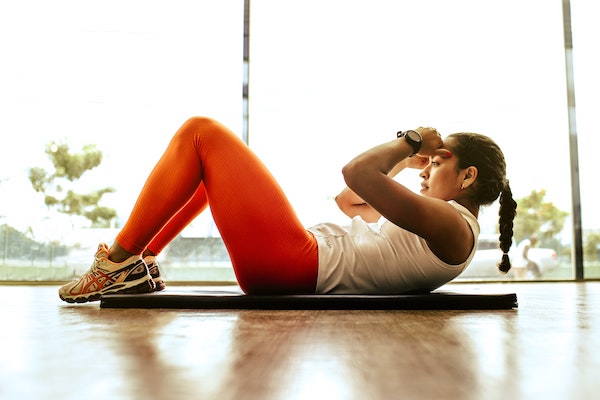Calories are the first thing people start tracking if they think about losing, gaining, or maintaining weight, improving health, and achieving overall well-being. How calories work, and what determines energy expenditure are essential things to know, entering the world of wellness. Understanding the basics, you will be able to organize the process in compliance with your goals, have more calories burned, and won't harm the body following internet hacks and tips.
What Are Calories?
In simple terms, a calorie is a unit of energy. It's the most important piece of information that will help to understand how it's used and stored. Calories are burned not only during the intense physical activity, even scrolling Facebook feed with just one finger requires some energy.
There are three components of the daily caloric expenditure:
- Basal metabolic rate (BMR) is the number of calories a body uses to function and keep all the processes going while at rest. Breathing, blood circulation, cell production, and other life-sustaining functions require energy.
- Every time after a meal, energy usage increases for about 4 to 8 hours as a body breaks down, digests, absorbs, and disposes of the food. The amount of calories used during this process is called the thermic effect of food.
- The most obvious component of the daily caloric expenditure is the amount of energy used during physical activity. It includes both intentional physical activity like calories burned lifting weights and incidental activity like calories burned standing, walking from one room to the other, moving furniture, or fidgeting.

Photo Credit: Unsplash
Why Do I Burn Fewer Calories Than My Friend?
To understand the concept of burning calories, imagine a Jeep and a Mini Cooper. Both cars can cover the same distance but will use a different amount of gas for that. Or for example, a tired and well-rested person will spend a different amount of time completing the same task. Their conditions at the starting point predetermine the number of resources they will need to concentrate and solve the task.
The same works with calories and people. As every one of us is a combination of unique characteristics, we require a different amount of resources to complete the same tasks, whether it is walking up the stairs or smashing a workout.
Factors Affecting the Calorie Burning Process
Internal Factors
- The first factor is age. As we get older, the metabolism rate starts to slow down. With time the body requires less energy to keep on functioning. It happens due to the loss of muscle tissue, hormonal, and neurological changes. Thus, 21-year old young women will burn around 344 calories swimming. While a 31-year old woman of the same weight and height results with 331 calories burned swimming the same amount of time.
- Another factor is gender. Men tend to have greater muscle mass, and that's why they have a higher rate of metabolism than women. For example, an average man burns a little over 500 calories running for 30 minutes at a moderate pace. While an average woman has around 420 calories burned running for the same period of time.
- Following the previous point, it's clear that the muscle mass and body compositions are important factors. Muscle requires 3 times more energy to function than fat. That's why a more muscular person burns more calories doing the same activities or even at rest. In general, a person with a bigger body size and hight has bigger organs and fluid volume. Hence a body requires a bigger amount of energy to keep it functioning.
- Genetic predisposition also affects the calorie-burning rate, and it’s a factor none of the standard calories burned calculator is able to consider.
- All processes in the body are interconnected. And when a person deals with an infection or other illness, the body throws more resources to recover, build new tissues, and stimulate an immune response. At that time, a body burns more calories than usual. A person experiencing a state of tension, anxiety, force, or fear tends to burn calories much slower. While chronic diseases like asthma also increase rates of caloric expenditure depending on the severity of the condition. Hence, the health status of a person has its effect on the fluctuation of the metabolic rate.
- Level of Vitamin D, Calcium, Iron, other vitamins and nutrient, hormonal and nervous controls can either boost or slow down metabolism. This makes the comparison of two people's results of the same activity almost impossible. To give accurate results, the calories burned calculator must consider over 20 metrics. While a standard app or fitness equipment hardly configures the rate to your height or weight.
For example, how does Fitbit calculate calories burned? The device builds on physical data a user provides, such as height, weight, sex, and age. Depending on the model of the tracker, it can also consider heart-rate data to estimate calories burned during exercise.
External Factors
- There are also external factors affecting energy expenditure. Working under extreme conditions, either very low or hot temperature, a body uses more resources to maintain its normal temperature. For example, 60 minutes of hot yoga and regular one account for 477 and 189 calories accordingly. It's also the reason people living in tropical climates have a 5 to 20 percent higher metabolic rate than people with the same physical features living in more temperate areas. The body just works harder to keep it cool.
- Then, there is also a variety of factors affecting how we burn calories while doing physical activity. Besides the obvious fact that different types of physical activity bring different results, other conditions define how fast or slow calories are burned. Studies show that our body can adapt to regular exercise, and with time a body needs less energy to do the same task. Calories burned walking a mile more won't be that noticeable if you lead an active lifestyle, as it's not a big deal for the body. A person can also hit a plateau if an exercise is no longer challenging. That's why many professional fitness trainers encourage to increase the intensity, add resistance training, or try out a new routine.
How to Speed Up the Calorie Burning Process?
Our bodies are complicated ecosystems sensitive to different external and internal stimuli. Because it's so responsive, there are numerous hacks and tricks on how to boost calorie burn. Trying to fool the system, be aware of the tools you use, and sources you trust. Dieting and weight loss are topics full of misleading and conflicting information that potentially can bring more harm than good.
Eat to Have More Calories Burned: Myths or Reality
Anyone into dieting might hear about the negative-calorie foods. These are low-calorie foods like celery, lettuce, grapefruit, cucumber, and broccoli. Many people believe our bodies use more energy to digest these foods than they actually contain. The latest study shows that it's a false notion. Nevertheless, it's always good to incorporate more greens and veggies into the menu.
Some sources state that fiber-rich foods like wholewheat pasta, oats, broccoli, carrots, seeds stimulate metabolism rate because these foods are harder to chew and digest. Studies show it's not exactly how high-fiber foods work. This type of products affects the secretion of various gut hormones, that in turn, impact the satiety. In addition to that, fiber brings positive changes to blood cholesterol, glucose levels, insulin, and overall health. In the end, people do benefit from a high-fiber diet, but it doesn't give immediate results like calories burned cycling or doing other physical activity.
Another popular claim is that spicy foods speed the metabolic rate. Partially it's true. Spices like red chilly, black pepper, or ginger do boost the caloric expenditure but only by about 8 percent over a normal rate. That's a relatively low number that doesn't bring much difference.

Photo Credit: Unsplash
But same as the so-called "negative-calorie" foods, adding spices to the diet still brings positive changes. For example, spicy foods increase feelings of satiety. So, even if you don't increase the metabolic rate, you might cut the calorie intake. Some spaces are used in Ayurveda and other natural medicine practices for their anti-inflammatory properties.
Foods high in proteins have an indirect effect on the calorie-burning process, as this type of product helps to build muscles. And as we stated earlier, 1 pound of muscles requires more energy than 1 pound of fat. Overall, eating certain foods won't bring tremendous results, and the go-to strategy should be increasing physical activity, eating well, and building muscles.
Calorie Burning Fun Facts
Our bodies constantly burning calories doing even the smallest things we don't notice. Here are a couple of fun facts on how much energy our bodies use throughout the day:
- Singing one song, a person can burn 10 to 20 calories. Now, count how many songs you sing along and thus burn calories while driving somewhere.
- Depending on the physical constitution and intensity, you can burn up to 40 calories while laughing.
- Kissing burns 2 calories per minute. Energy expenditure for 10 kissing minutes equals calories burned walking for 10 minutes.
- Some house chores can burn more calories than low-intensity workouts. Sweeping and then vacuuming each for 10 minutes, an average person can burn around 74 calories. It's a bit more than calories burned biking for 20 minutes at a slow pace.
- While sleeping, an average person burns 68-91 calories per hour. The number is less than any activity while we are awake. But calories burned sleeping have hidden value, as a shortage of sleep takes its toll on health and weight.

Photo Credit: Unsplash
Keeping track of the calories, remember that our bodies are complex organisms where everything plays its role. That's why it's hard to fool it to burn more calories with a simple glass of cold water or an extra pinch of black pepper. Increased physical activity is the only strategy that gives one hundred percent results. And before getting unmotivated or irritated by someone else's results, remember that every one of us is a unique combination of genes, hormones, predispositions, and characteristics. This makes a straightforward comparison impossible.
Photo Credit: DepositPhotos





